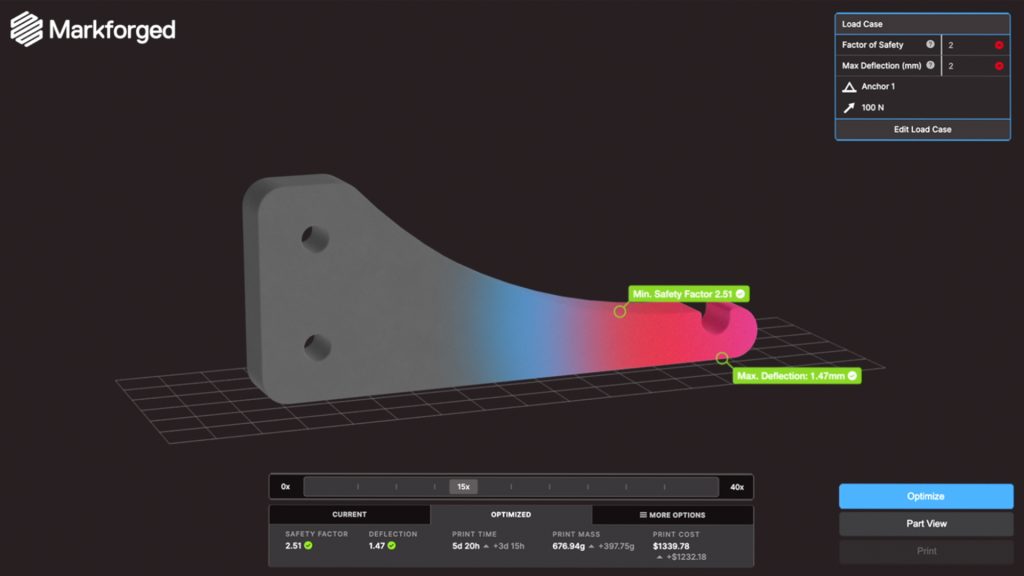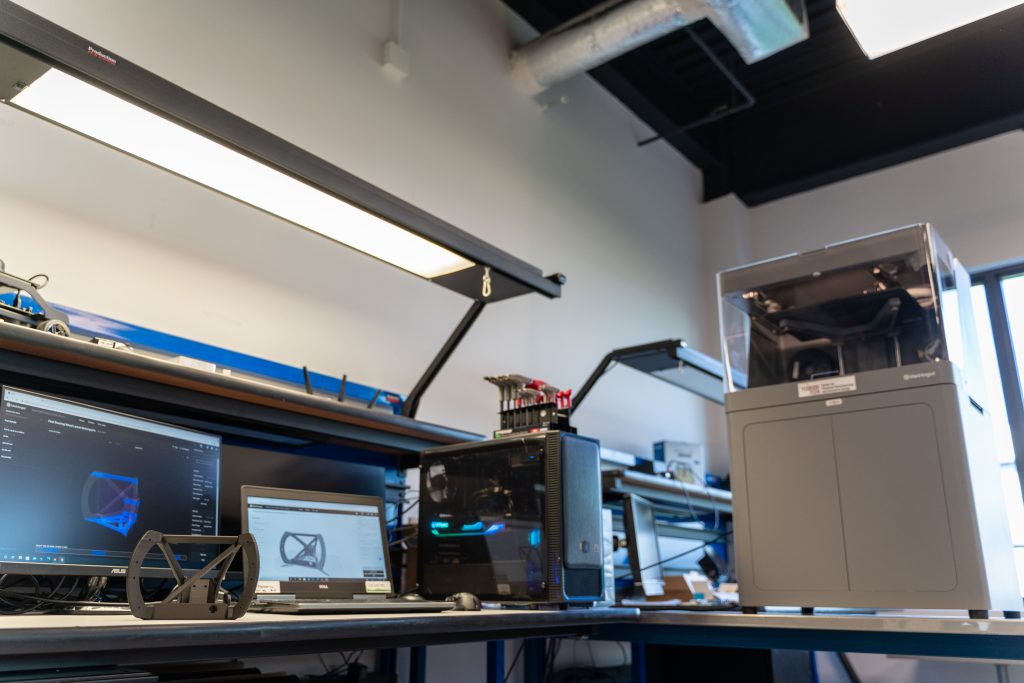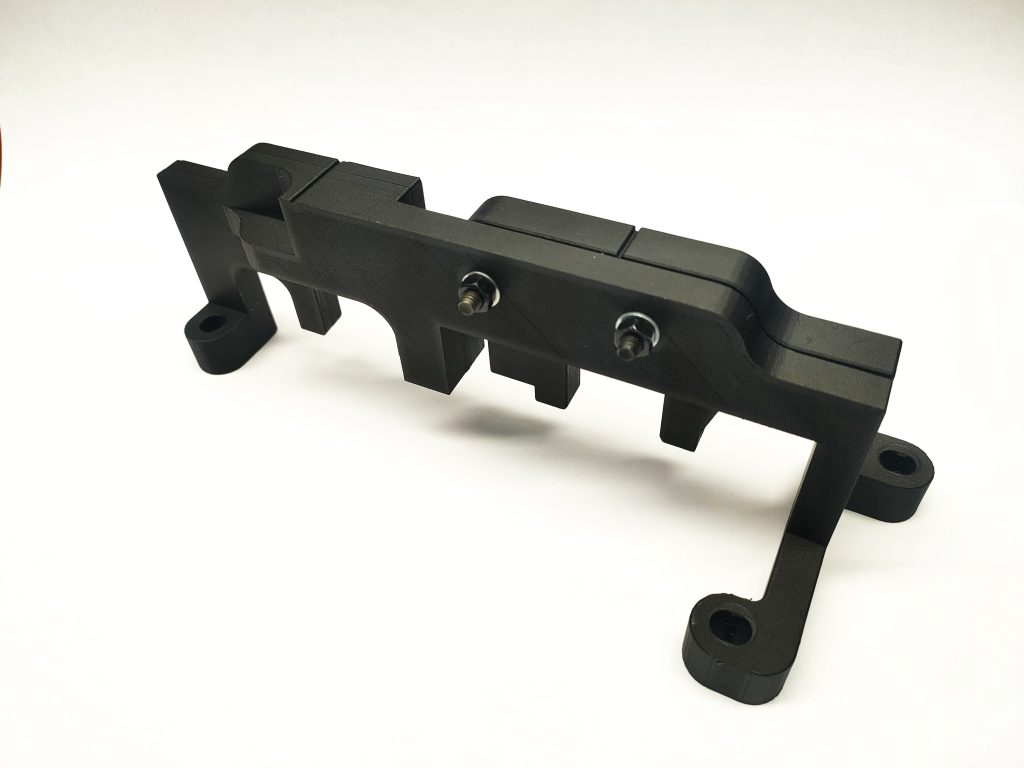The 3D Printing Industry Awards 2022 shortlists are now available for voting. Who will win the 2022 3DPI Awards? Have your say by casting your vote now.
As labor shortages, fluctuating demand, lockdowns, and trade barriers conspire in a global supply chain crisis many are turning to 3D printing. Doing so provides manufacturers with rapid access to parts, reducing their lead times from months to days or weeks, while enabling them to manufacture in a more sustainable, potentially less expensive way than subtractive methods allow.
Switching to 3D printing in this way also opens up other opportunities, including the development of consolidated and lightweighted parts with variable levels of infill. Likewise, when it comes to replacing discontinued components, additive manufacturing can be used alongside other technologies like 3D scanning to reverse engineer and print new ones that would otherwise be impossible to acquire.
However, a key roadblock to adopting the technology remains: how can manufacturers be 100% sure that their 3D printed replacement will work like the original? While there are now numerous part certifications and validation products on the market, there remains a need for a solution that minimizes the number of design iterations.

In some cases, concerned manufacturers are overbuilding parts by using 100% infill or lots of reinforcement, while in others, they’re not taking full advantage of 3D printing by not using it to produce load-bearing metal builds. On the parameter front, qualification can also be an expensive process, with firms spending excessive amounts of time and materials, until they are confident that the part will perform as required.
So how can manufacturers get around these concerns cost-efficiently? One way they can now do so is with the newly-launched Simulation feature for the Markforged Eiger 3D printing software. By allowing users to replace the design-print-break test cycle with virtual testing, the feature is said to enable manufacturers to expand their use of 3D printing into even more demanding production applications.
Simulation in Markforged Eiger
With its new Simulation offering, Markforged aims to help deliver on the promise of 3D printing by providing users with a means of verifying that any part will perform before they’ve even printed it. Getting started with the software is as simple as entering anchor, load strength and stiffness data, before hitting ‘Validate.’ This triggers a simulation that tests parameters to validate part performance.
Once this stage has been completed, users then have the option of hitting another button to run further simulations as a means of tweaking settings to optimize on time and costs without sacrificing performance. Specifically, the program makes this possible via adapting floor, wall, infill, and fiber reinforcement levels, thus providing adopters with the ability to further customize their prints as desired.
Already, Eiger’s Simulation functionality has been picked up by the likes of 280 mph drag racer manufacturer Larsen Motorsports. Earlier this year, the team set out to solve the problem that its stock aluminum steering wheels didn’t fit the smaller hands of one of its primary drivers, Josette Roach. To give her a better grip when steering, Larsen Motorsports has managed to 3D print a Continuous Carbon Fiber-reinforced Onyx replacement.
According to the team’s Director of Operations, Brian Tocci, Simulation in Eiger allows them to “test, iterate and keep iterating until they get a design they were happy with.” Tocci also alluded to the outfit not “having to print ten different parts” to get to a final design, and Josette now has the equipment needed to drive its jet-powered dragsters safely.

Gaining traction in automotive
Another of Markforged’s Eiger Simulation beta users was PUNCH Torino, a manufacturer that specializes in the design and development of propulsion systems and control solutions. One of the main sectors the firm addresses is automotive, and it counts some of the largest OEMs in the industry as customers. To help it meet customer engine testing needs, the company has set up an AM Lab at its 600-staff engineering center, where it 3D prints related tooling, jigs, and prototype parts before they go into full production.
In an interview with 3D Printing Industry, Valerio Ametrano, a Senior Pre-Production Engineer at PUNCH Torino, explained how it was already using Markforged X7 and Markforged Onyx Pro systems at the lab to produce everything from flywheel locking tools to positioning tools, but Simulation is now aiding its engine mounting efforts.

“When we have a new engine that is a prototype, we don’t have all the tools to complete the assembly, so it’s more cost-effective to print them in-house,” revealed Ametrano. “Simulation from Markforged has helped us to shorten this time, to reach the targets we needed to on strength and wear resistance, while reducing the number of iterations we had to do.”
Using Simulation in Eiger, Ametrano went on to explain how PUNCH Torino has been able to develop a camshaft locking tool that’s “like a fork put on the engine during the tightening of the wheel.” As “there’s a lot of torque it has to resist,” the firm’s engineers simulated the part’s performance, before tweaking their design to “reach the optimal parameters.”
Ametrano added that traditionally such a part would be CNC machined over the course of four weeks, but with 3D printing his firm has been able to slash its lead time by 80% to just four days. Utilizing Simulation helped make this possible, by allowing the firm’s engineers to account for the changing stresses put on their part through design iterations, and ensure it could reach the required performance level.
Having worked closely with the Markforged team as an early user of Eiger Simulation, Ametrano also said his Markforged counterparts “fulfilled all his requests” regarding new feature integration. For its part, Markforged has committed to updating the software with additional functionalities, and it has now launched its Simulation tool for all users of its Eiger 3D slicing and printing software as a free trial until April 2023.
Those interested in finding out more can visit the Markforged Simulation trial website here.
To stay up to date with the latest 3D printing news, don’t forget to subscribe to the 3D Printing Industry newsletter or follow us on Twitter or liking our page on Facebook.
While you’re here, why not subscribe to our Youtube channel? featuring discussion, debriefs, video shorts and webinar replays.
Are you looking for a job in the additive manufacturing industry? Visit 3D Printing Jobs for a selection of roles in the industry.
Featured image shows a screenshot of the UI when using the Simulation feature on Markforged’s Eiger software. Image via Markforged.



